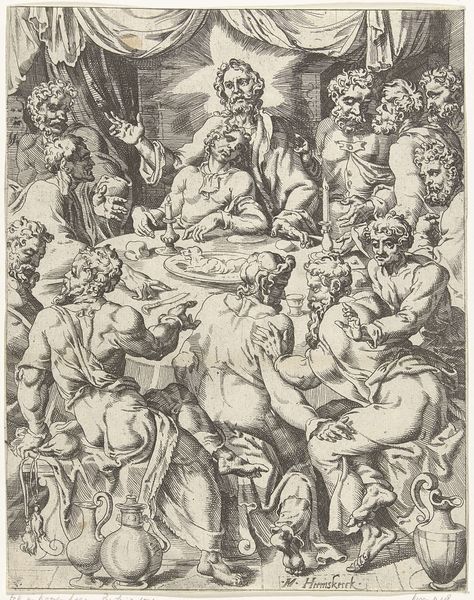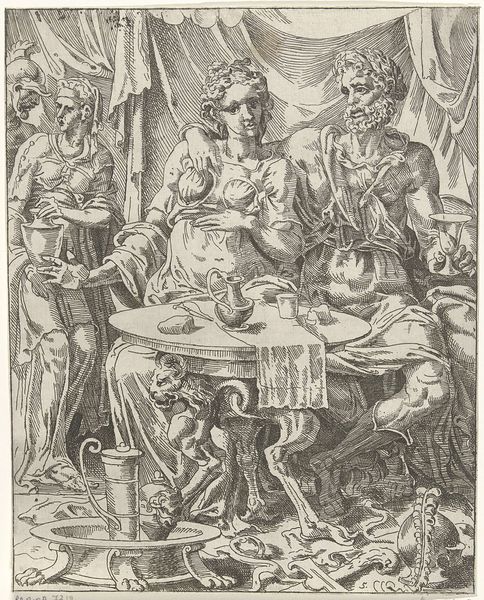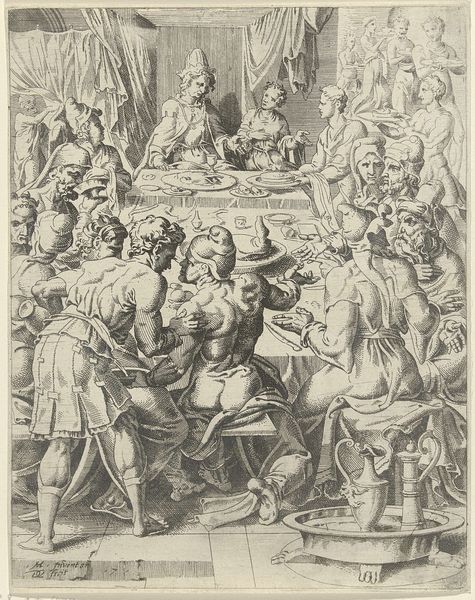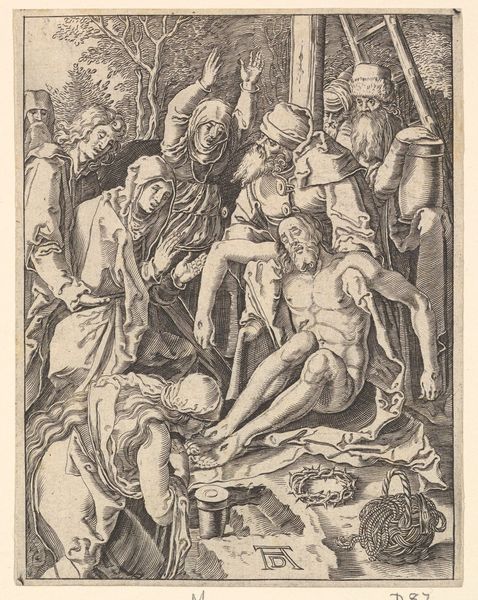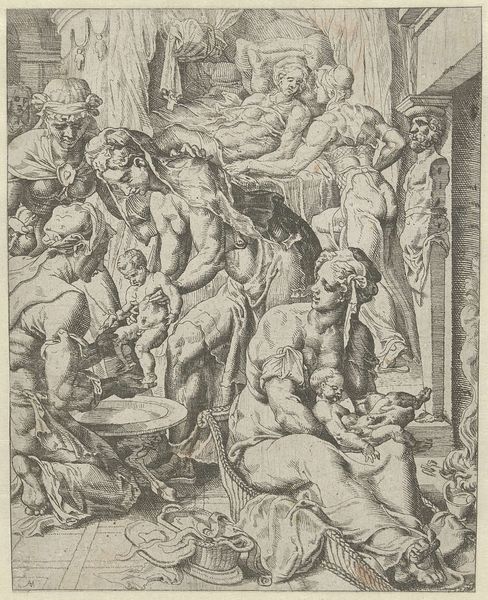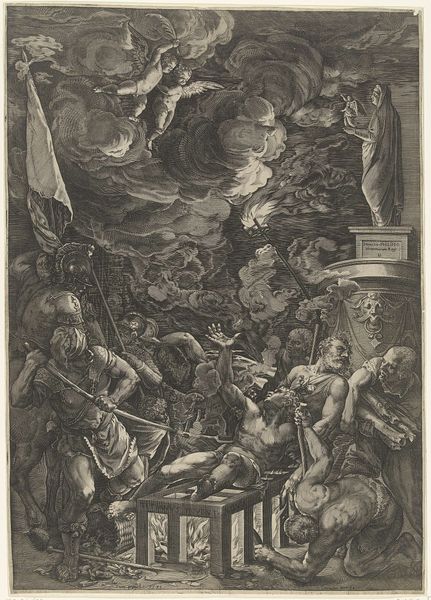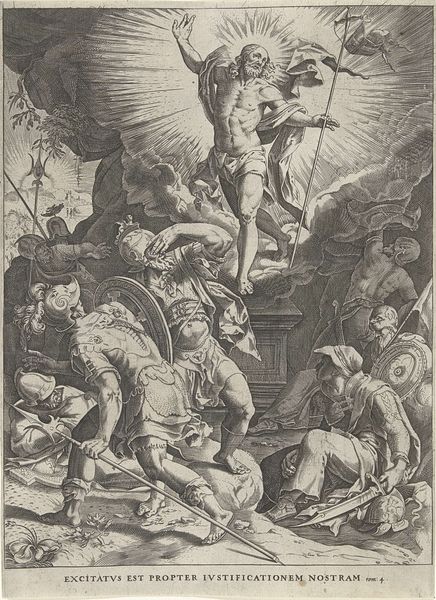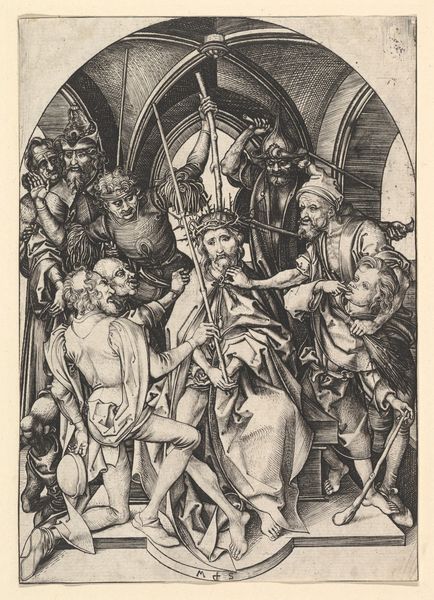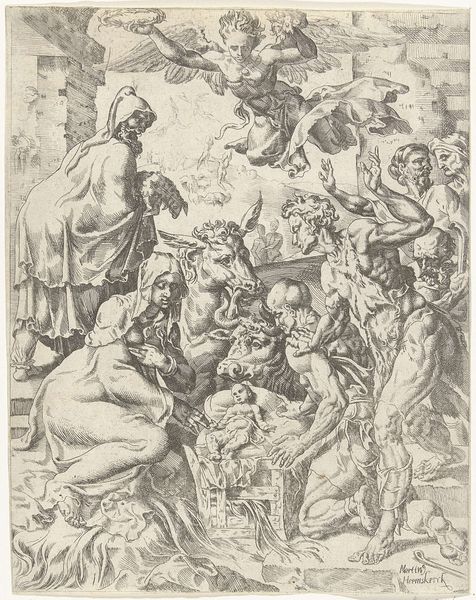
drawing, print, ink, engraving
#
drawing
#
narrative-art
#
pen drawing
# print
#
pen illustration
#
pen sketch
#
mannerism
#
figuration
#
ink
#
history-painting
#
engraving
Dimensions: width 194 mm, height 239 mm
Copyright: Rijks Museum: Open Domain
Curator: Here we have Dirck Volckertsz Coornhert's "Judit voor Holofernes," an engraving created around 1547 to 1559. It's currently held at the Rijksmuseum. What strikes you initially? Editor: The density of the scene, definitely. It’s packed with figures, and the dramatic chiaroscuro gives it an almost claustrophobic feeling, heightening the tension, perhaps. Curator: The engraving depicts Judith pleading before Holofernes. Consider the psychological weight of her stance, kneeling and vulnerable. What symbolic meaning might Coornhert be conveying? Editor: Well, contextually, the 16th century was hardly a banner period for female agency. So Judith’s submissive pose – and the looming power of Holofernes and his retinue – reinforces existing power structures. But does that image challenge them in its presentation, I wonder? Is she also perhaps embodying defiance in disguise? Curator: Interesting. The engraving itself allows for the dissemination of such interpretations through prints. The artist's chosen moment emphasizes a plea for mercy. In Judith's story, she ultimately beheads Holofernes. By portraying her in a posture of apparent surrender, Coornhert seems to highlight the performative aspects of power dynamics. Judith’s kneeling might become the source of her strength. Editor: That shift is visible also, perhaps, in the other men, arranged like a theater audience. The male gaze is quite clear in the visual design and their arrangement and attitudes around power Curator: Indeed. The act itself – the beheading – isn't visually present, only alluded to. The tension hangs thick, and the symbolic weight shifts from physical action to a psychological and social game of dominance and cunning. Editor: And consider who this artwork would be intended for. It would be very unlike commoners to own something of such craftsmanship. The intended audience might well have had its own views about a character of female resistance. Curator: Absolutely. The print, circulating amongst educated circles, served to not just depict a biblical scene but spark complex questions. Coornhert's focus isn't solely on the biblical story itself, but it also concerns the audience, the contemporary views regarding leadership and moral courage. Editor: So we’re looking at a nuanced image that works on both the literal narrative level and also on the symbolic socio-political level. Curator: Exactly. A historical scene serving a present discourse. It asks: what does heroism look like, and to whom? Editor: Food for thought, indeed. Curator: Definitely!
Comments
No comments
Be the first to comment and join the conversation on the ultimate creative platform.
